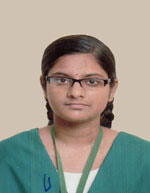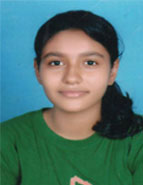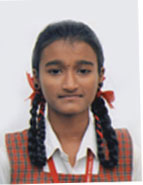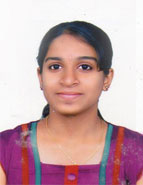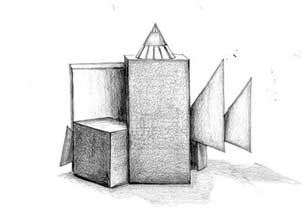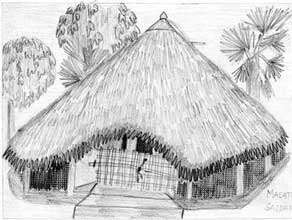NATA 2024
NATA EXAM PATTERN 2019/NATA EXAM SYLLABUS 2020
NATA 2020 exam pattern :
It’s a ONE-DAY ONLINE CUM PAPER BASED EXAMINATION all over the country with 02 Attempts
NATA 2020 exam date schedule:
Two Nata exam attempts are provided for students to prove their interest and excellence towards Architecture career for the year 2020
NATA EXAM 2020 - IMPORTANT DATES
| NATA EXAM 2020 |
ATTEMPT - 1 |
ATTEMPT - 2 |
| Exam Date |
19.04.2020
|
31.05.2020
|
| Applicatio start date |
02.02.2020 |
02.02.2020 |
| Application End date |
16.03.2020 |
04.05.2020 |
| Admit card/Hall Ticket download date |
04.04.2020 |
21.05.2020 |
| NATA 2020Exam Application Fees |
Rs.2000/Attempt
Rs.1700/Attempt (only for SC/ST)
Note: if two attempts are booked at single shot, the total fees for 2 attempts is Rs3800(Rs.3100 in case of SC/ST)
|
Rs.2000/Attempt
Rs.1700/Attempt (only for SC/ST)
Note: if two attempts are booked at single shot, the total fees for 2 attempts is Rs3800(Rs.3100 in case of SC/ST)
|
| NATA 2020Result Declaration |
08.05.2020 |
14.06.2020 |
Medium of Exam : Only English
Negative Marks for Incorrect answers in NATA Exam : No
Exam Timings: 10.00 a.m to 01.15 p.m ( 03 Hours with 15 minutes break between online aptitude Exam & drawing exam )
Total Marks of NATA exam: 200 Marks. i.e 52.5 ( General Aptitude) + 22.5( PCM) + 125 ( Drawing)
Part - A (125 Marks) -PAPER BASED)
Part – A Timings: 10.00 a.m to 12:15 p.m (2hours 15 Minutes)
Drawings in A4 Size paper- 3 Questions carrying 35 marks, 35 marks & 55 marks, respectively .
Part - B ( 75Marks)-ONLINE
Section 1: General Aptitude Online Exam / MCQ Model
Question Pattern : 35 Questions x 1.5 Marks/Question = 52.5 Marks
Section 2: PCM Online Exam / MCQ Model
Question Pattern : 15 Questions x 1.5 Marks/Question = 22.5 Marks
Nata Syllabus
Test-I:NATA DRAWING TEST
Understanding of scale and proportion of objects, geometric composition, shape, building forms and elements, aesthetics, colour texture, harmony and contrast. Conceptualization and Visualization through structuring objects in memory. Drawing of patterns - both geometrical and abstract. Form transformations in 2D and 3D like union, subtraction, rotation, surfaces and volumes. Generating plan, elevation and 3D views of objects. Creating 2D and 3D compositions using given shape and forms. Perspective drawing, Sketching of urban scape and landscape, Common day-to-day life objects like furniture, equipment etc., from memory.
Note: For Natadrawing Test, its absolutely necessary that the student is well trained for imaginary perspective sketching, colour application knowledge, shade – shadows along with logo ,mural creations with all types of 2d Line compositions.
Test- II :GENERAL APTITUDE
Aesthetic Sensitivity is to evaluate candidate’s perception, imagination and observation; creativity and communication; and Architectural awareness. The test shall be of objective type and comprise of topics related to,
Objects, texture related to architecture and built environment. Interpretation of pictorial compositions, Visualizing three-dimensional objects from two-dimensional drawing. Visualizing different sides of 3D objects. Analytical reasoning, mental ability (visual, numerical and verbal), General awareness of national/ international architects and famous architectural creations. Mathematical reasoning: Statements, logical operations like and, or, if and only if, implies, implied by. Understanding of tautology, converse, contradiction and contrapositive. Sets and Relations: Idea of sets, subsets, power set, complement, union, intersection and difference of sets, Venn diagram, De Morgan's Laws, Relation and its properties. Equivalence relation — definition and elementary examples.
Download nata syllabus
Related Links
Test- III :PCM
PHYSICS
Electrostatics- Electric charges and Fields; Electrostatic Potential and Clearance Current Electricity; Magnetic Effects of Current and Magnetism; Moving Charges and magnetism; Magnetism and Matter Electromagnetic Induction and Alternating currents- Electromagnetic Induction; Alternating Current Optics- Ray optics and optical instruments, Wave Optics Dual nature of radiation and Matter Atoms and Nuclei- Atoms, Nuclei Electronic devices- Semiconductor Electronics, Materials, Devices and Simple circuits
CHEMISTRY
Some Basic Concepts of Chemistry; Structure of Atom; Classification of Elements and Periodicity in Properties Chemical Bonding and Molecular; States of Matter: Gases and Liquids Chemical Thermodynamics; Equilibrium; Redox Reactions; Hydrogen; s- Block Elements p -Block Elements Organic Chemistry: Some basic Principles and Techniques; Hydrocarbons; Environmental Chemistry
MATHEMATICS
Algebra: Definitions of A. P. and G.P.; General term; Summation of first n-terms of series ∑n, ∑n²,∑n3 ; Arithmetic/Geometric series, A.M., G.M. and their relation; Infinite G.P. series and its sum.
Logarithms: Definition; General properties; Change of base.
Matrices: Concepts of m x n (m ≤ 3, n ≤ 3) real matrices, operations of addition, scalar multiplication and multiplication of matrices. Transpose of a matrix. Determinant of a square matrix. Properties of determinants (statement only). Minor, cofactor and adjoint of a matrix. Nonsingular matrix. Inverse of a matrix. Finding area of a triangle. Solutions of system of linear equations. (Not more than 3 variables).
Trigonometry: Trigonometric functions, addition and subtraction formulae, formulae involving multiple and submultiple angles, general solution of trigonometric equations. Properties of triangles, inverse trigonometric functions and their properties.
Coordinate geometry: Distance formula, section formula, area of a triangle, condition of collinearity of three points in a plane. Polar coordinates, transformation from Cartesian to polar coordinates and vice versa. Parallel transformation of axes, concept of locus, elementary locus problems. Slope of a line. Equation of lines in different forms, angle between two lines. Condition of perpendicularity and parallelism of two lines. Distance of a point from a line. Distance between two parallel lines. Lines through the point of intersection of two lines. Equation of a circle with a given center and radius. Condition that a general equation of second degree in x, y may represent a circle. Equation of a circle in terms of endpoints of a diameter. Equation of tangent, normal and chord. Parametric equation of a circle. Intersection of a line with a circle. Equation of common chord of two intersecting circles.
3-Dimensional Co-ordinate geometry: Direction cosines and direction ratios, distance between two points and section formula, equation of a straight line, equation of a plane, distance of a point from a plane.
Theory of Calculus: Functions, composition of two functions and inverse of a function, limit, continuity, derivative, chain rule, derivative of implicit functions and functions defined parametrically. Integration as a reverse process of differentiation, indefinite integral of standard functions. Integration by parts. Integration by substitution and partial fraction. Definite integral as a limit of a sum with equal subdivisions. Fundamental theorem of integral calculus and its applications. Properties of definite integrals. Formation of ordinary differential equations, solution of homogeneous differential equations, separation of variables method, linear first order differential equations.
Application of Calculus: Tangents and normals, conditions of tangency. Determination of monotonicity, maxima and minima. Differential coefficient as a measure of rate. Motion in a straight line with constant acceleration. Geometric interpretation of definite integral as area, calculation of area bounded by elementary curves and Straight lines. Area of the region included between two elementary curves.
Permutation and combination: Permutation of n different things taken r at a time (r ≤ n). Permutation of n things not all different. Permutation with repetitions (circular permutation excluded). Combinations of n different things taken r at a time (r ≤ n). Combination of n things not all different. Basic properties. Problems involving both permutations and combinations.
Statistics and Probability: Measure of dispersion, mean, variance and standard deviation, frequency distribution. Addition and multiplication rules of probability, conditional probability and Bayes’ Theorem, independence of events, repeated independent trails and Binomial distribution.
NATA Exam 2020
What is NATA ?
NATA means National Aptitude test in Architecture
NATA exam conducting Authority:
COA – Council of Architecture, a core body constituted by the government of india that provides & regulates standards of education, registration of architects, standards of professional conduct e.t.c
Total Number of architectural education institutions in india : About 450 institutions as of 2017.
NATA – A Mandatory exam for admission to B.Arch in INDIA:
As per the As per the minimum standards of architectural education regulations prescribed by COA , qualifying in an aptitude test in architecture is mandatory for admission to B.Arch degree course.
About NATA 2020:
Purpose of NATA Exam:
This is to facilitate a unified scheme of examination for testing the aptitude of prospective students all over the country to apply for admissions to B.Arch degree course for any school of architecture across india (Except N.I.T & I.I.T institutions for which the JEE – B.Arch Paper -2 has to be cleared separately).
Skill Measurement made through NATA 2020:
This actually measures the aptitude of the candidate for the specific field of study i.e Architecture. This tests the person’s skill over drawing, observation, aesthetic sensitivity, sense of proportion, Mathematics & critical thinking ability.
NATA 2020 APPLICATION/ADMIT CARD/RESULTS/NATA EXAM CENTRES 2020
NATA 2019 Application Procedure:
Nata Application dates : ATTEMPT - 1 02.02.2020 to 16.03.2020
ATTEMPT - 2 02.02.2020 to 04.05.2020
- Prerequisite to be kept ready before filling the NATA 2020 application: Keep all digital jpeg formats of Recent colored passport sized photograph(4 cm x 3cm - max 100 kb), left thumb impression(1.5 cm x 3.5 cm - max 30 kb) & candidate signature (1.5 cm x 3.5 cm - max 30 kb) ready before starting to fill the application.
- Application Portal: Visit http://www.nata.nic.in
- Click on the link “ ONLINE APPPLICATION NATA – 2020”.
- Fill the online Application of Nata 2020 available in the above mentioned website.
- Fill all the mandatory fields marked with * without fail.
- All 3 categories of the NATA application form 2020 has to be filled : Personal details , Document uploading & fees payment.
- Print out the confirmation page generated on its scheduled available date , after successful payment for the payer’s self – record.
- Rs.2000/Attempt (Rs.1700 in case of SC/ST) to be paid as application fee by clicking " Payment of Fee through EPG Services). Also you can Pay Rs.3800 as payment for booking forboth the 2 attempts in single first shot itself. (Rs.3100 in case of SC/ST)
- There is no need to send any printed application or documents via post COA Head Office.
- The generated application number & the password applied to it by the individual has to be kept in memory for further correspondence or verification of any discrepancy.
Note: In case any filled data of the application got any errors, there would be a window period during which the candidates would be allowed to change their data.No further changes would be entertained beyond this stipulated window period.
NATA APPLICATION 2019 CORRECTION WINDOW:
Issue of NATA 2020 Exam Admit card/Issue of NATA 2020 Hall ticket:
Admit Card/Hall Ticket: It contains the details of the NATA 2020 examination centre & the roll number .
Its available in downloadable format in the candidate’s login Hence to be printed & taken while appearing in the exam centre for the exam.
Publication of downloadable Admit card in www.nata.in : refer to the above table for the dates separately for first attempt & second attempt.
Note: The admit card to be retained carefully in undamaged condition till the completion of admission procedure.
Documents to be carried to Appear for the NATA 2020 exam:
- NATA 2020Admit card /Hall ticket
- One Recent passport size photograph ( preferably the same that was uploaded along the application form)
- One Photo I.D Proof ( Voter Card/Pan Card/Aadhar Card/Driving Licence )
NATA exam centres 2019:
The allocation of examination centre is subject to availability of at least 250 students in general.Cities will be based on the choices given by the candidate during online form fill-up. However, the allocation is to the discretion of the COA & it’s the final where any request towards change of exam centres will not be considered.
NATA exam 2020 result declaration:
For, NATA 2020 exam result dates, refer the above table.
NATA 2020 Result Format :
Results will be available in the website of the council & various other websites & the info regarding the same would be published in print medias before the declaration.
The results will be available in 02 formats:
- Marks obtained out of 200 & in each component.
- Pass/Fail
Minimum Qualifying Marks for NATA 2020/ Pass Mark of NATA 2020 would be based on following rules
- At least 25% marks to be secured in MCQ Portion ( 30 out of 120 )
- At least 25% marks to be secured in Drawing portion ( 20 out of 80 )
- Overall Qualifying marks ( out of 200) would be based on post-exam statistics & at the discretion of the council.
Applying for Rechecking of NATA exam scores:
There is no, Photo copy of valuated sheet or Revaluation is applicable for NATA Exam 2020.
ELIGIBILITY TO NATA 2019/B.ARCH ADMISSION 2020
Eligibility to take up NATA 2020:
- NATA 2020 is a qualifying aptitude test for admission into the B. Arch degree program, subject to fulfillment of eligibility criteria prescribed by the Council.
- The candidates who have passed 10+2 level examination with at least 50% aggregate marks in Physics, Chemistry & Mathematics (PCM) and also at least 50% marks in aggregate of the 10+2 level examination or passed 10+3 Diploma Examination with Mathematics as compulsory subject with at least 50% marks in aggregate, shall be eligible to appear for NATA-2020.
- The candidates appearing for 10+2 examination with PCM or 10+3 Diploma with Mathematics in the current year may also provisionally appear for NATA-2020, subject to fulfilling the above criteria. The candidates belonging to SC, ST, OBC-NCL category or PwD (Persons with disability) shall be provided a relaxation of 5% marks in total aggregate in 10+2 level/10+3 Diploma as well as PCM.
NATA REULTS 2018 STATISTICS
NATA 2018 RESULTS- STATISTICS
ALL INDIA
42098 candidates registered
37246 candidates appeared for the exam (88% of registered alone appeared for exam)
24540 candidates passed the exam. (58% of registered alone has cleared the exam OR 65% of appeared has cleared)
NATA 2018 RESULTS
TAMILNADU
4334 candidates registered
3264 candidates appeared (75% of registered alone appeared)
2009 candidates cleared (46% of those registered have cleared OR (61.5% of those appeared alone have cleared )
Total seats in tamil nadu need to be filled only by counselling is 2720 (53 institutes)
NATA RESULT 2018 ANALYSIS
Reasons for less Applicants for Nata exam in 2018: The Application issue started by jan 1st week and closed by feb 2nd week and this information dint reach many of students as they were under the impression that the application would be available online anytime between march to september as it was in 2016 and before. Even COA (council of Architecture) dint take enough effective steps to propogate this change in the application dates to the public.
Hence there were many Architecture career aspirants who missed the chance to get the application in 2017 and lost the chance to grasp their dream career.
Reasons for less pass % in Nata exam in 2018: Like the sudden change in the application date, there was a critical change in the Nata exam sylllabus and pattern of exam. 20% of Maths was suddenly included in the syllabus and the Maths portions were a shock to most of students as it comprised of CBSE +1 and +2 Portions and hence,most of the State board students couldnt cope up with the less availablepreparation time of those suddenly included portions within 15 days after their 12th exams as the exam was scheduled on 29th april 2018 and the students completed their +2 exams only by the end of march 2018.
Confusions in B.Arch Admissions 2018: As a result, there were less number of eligible candidates for admissions in to the archietcture colleges throughout india.In caseof tamil nadu, thestate decided to conduct one more Exam to increase the number of eligible candidates and ANNA UNIVERSITY conducted the architecture aptitude test for the students of tamil nadu in the name of "TANATA" by the end of june 2017.But by,the tme these information reached students, most of the frustrated disappointed students have already attended the Engineering counselling and joined the Engineering or arts stream.Therefore very less number of students took up this TANATA 2087.
But the confusions dint end right there. The students who have scored rankings in NATA exam 2018 challenged this decision of anna university that the TANATA exam resuts would affect their rankings for admissions for the meritorous seats. Hence, he anna university declared that the students who pass TANATA would gain only the eligibility to join Architecture(B.Arch) through the management seats of any anna university affiliated college or deemed universities and that they would be given nil chance to appear for the Anna uniersity B.Arch single window system rank based counselling. Therefore the students were again left with less choices and unnecessary high fees - admissions in colleges.
Information about Nata 2024
1. What is NATA?
2. Who is eligible for NATA?
3. Where to appear for NATA?
4. When to appear for NATA?
5. How to register for NATA?
6. How to appear for NATA?
7. When and where is the Score card available?
8. What is the passing score at NATA?
Will be decided based on post-exam statistics,
Minimum Marks scoring to pass:
1.Min 30/120 in MCQ ( Maths & Aptitude)
2.Min 20/80 in Drawing
(However 30+20=50 should not be understood as the total qualifying mark)
9. Where can a candidate seek admission on the basis of NATA?
10. What is the last date for giving NATA?
11. What is the meaning of Admission Authority?
Admission Authority is a body, authorised by the Central/State Govt. / University to conduct
and monitor admissions in that area. This may vary from the Directorate of Technical Education
itself, a major University, Institution(s), a body created by an association of Architectural Schools
in that State (eg. MASA), or any other Admission Authority recognised by the state. The candidate
may be advised to check up in advance with Schools of Architecture where he / she is
applying for the details of the admission authority and other information on the exact
admission process.
12. How do I practice for NATA? Where can I take Nata tuitions?
NATA is designed in such a manner that prior tutelage is not required. COA/NIASA is aware
that the candidates will have no or minimal knowledge of architecture. NATA measures
aptitude of the candidate in his / her aesthetic sensibilities (3D visualisation, logical
understanding, etc.) and drawing skills that are in-built in every candidate and developed
right from childhood to the present day. There will be certain questions on architectural
awareness wherein candidates may be required to identify building of national or international
importance. The candidate is expected to know about these structures through General
Knowledge. The candidate may also prefer to update his knowledge on this by some reading,
internet browsing or even by talking to architectural students, architects and other knowledgeable
persons. In all probability, this will not be required. There will be a model NATA interface
available on the NATA website to help candidates get acquainted with the visual format of the
test. There will be no model questions available as such. The language medium of the test will be
English. Minimal computerskills are required (pointing and clicking Mouse buttons).
13. I am a foreign student / NRI. Can I take the test from my country of residence?
*Those opting for Dubai as their first choice of Exam city need to fill up two more choices mandatorily.
*Dubai may be dropped as an exam city in case of inadequate number (less than 300) of candidates.
*The candidates allotted to exam centre in Dubai as per their first choice, shall be liable to pay an additional fee of INR 7000 per candidate prior to issuance of Admit Card.
*The mode of payment of aforesaid additional fee would be notified in due course.
* Dubai cannot be chosen as second or third choice of exam city
14. IfI belong to a particular quota (SC/ST/NT/etc.), do I getscorewaiverforNATAduring admission?
15. Are there any additional fees payable for training, etc?
16. Whether old question papers are available?
No. At NATA, question paper is unique of each candidate hence no old question papers can be
made available.
For any other questions please register at NATA website (http://www.nata.in) and get into
'Forum' section. You can post your queries here. Please search before you post the query. It
may be already raised by some other candidate and already answered.
Information Brochure NATA 2018


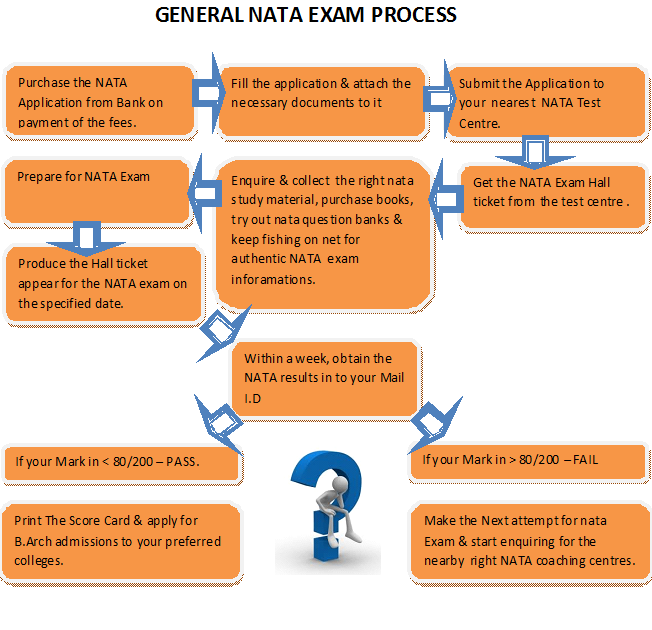
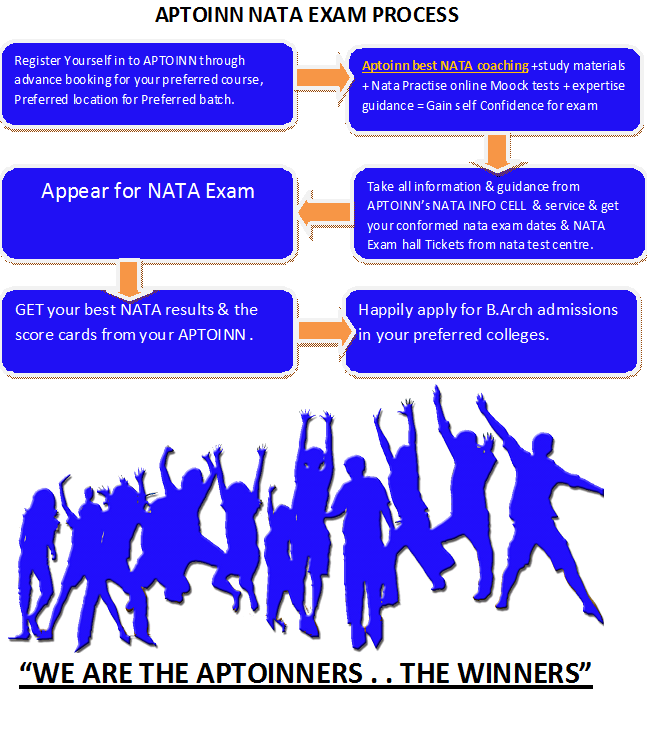
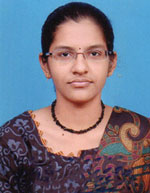


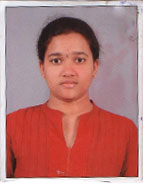















.jpg)
.jpg)
.jpg)
.jpg)
.jpg)







